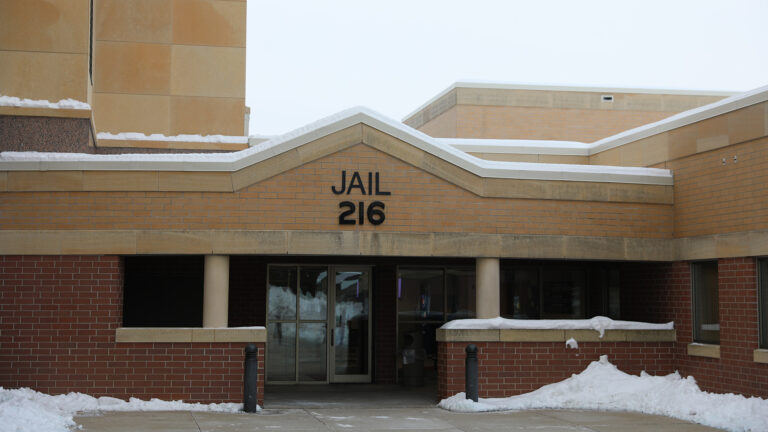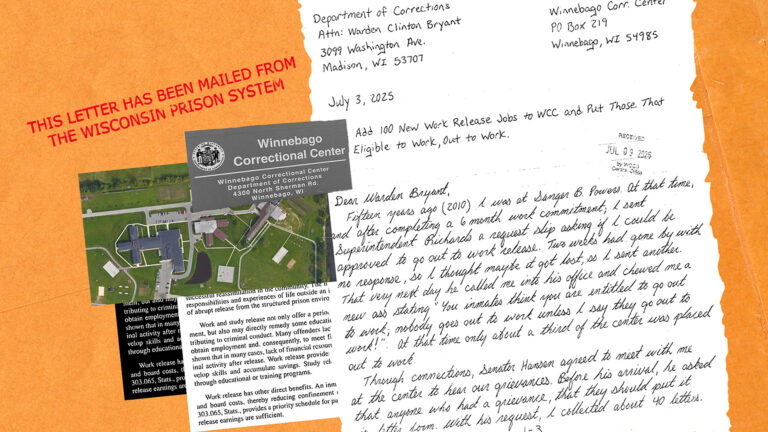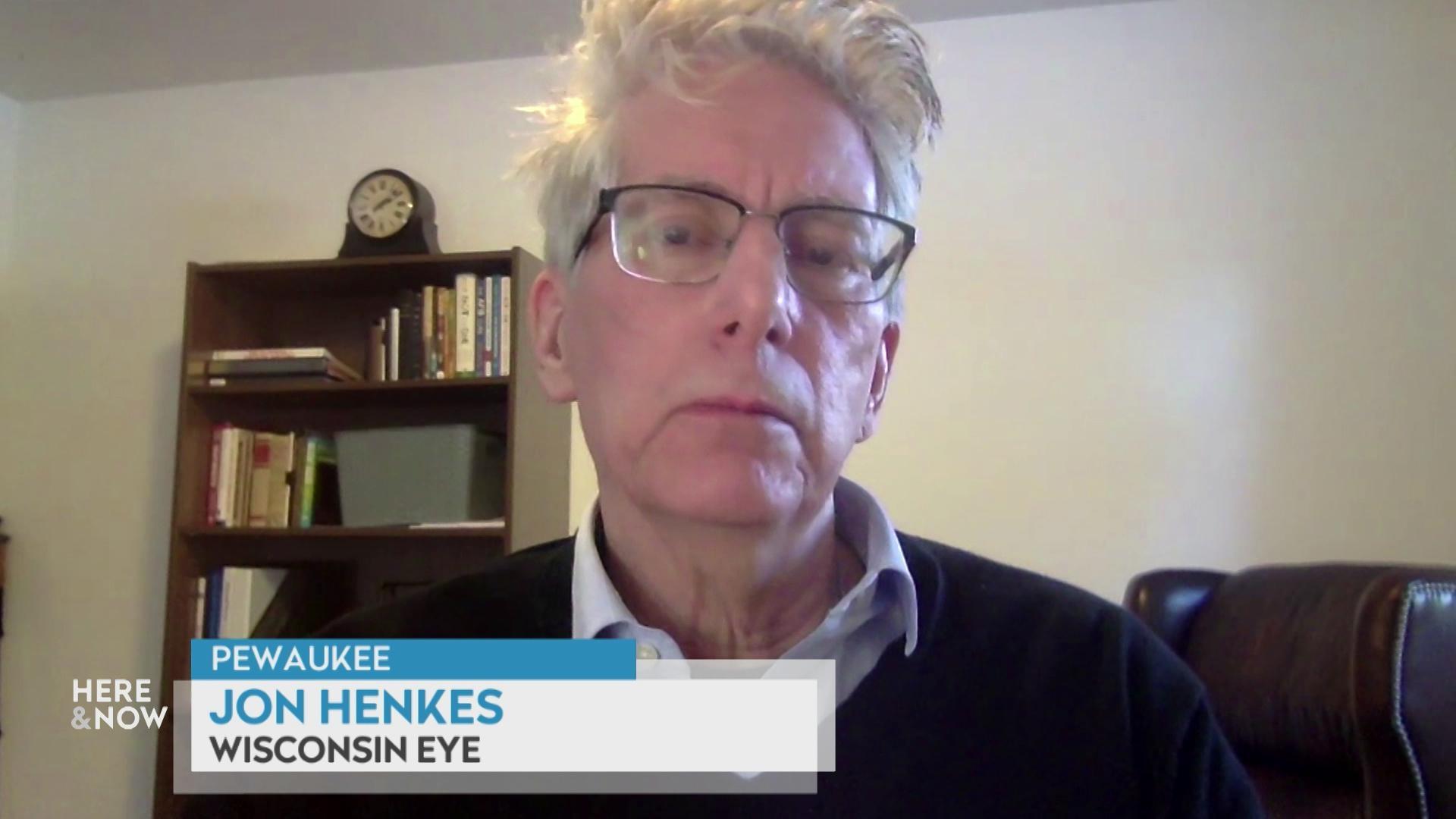Wisconsin's Opioid Settlement Law Cuts Off Cities from Suing for Damages
Signed by Gov. Tony Evers despite his statement that it is unconstitutional, a framework is in place to distribute hundreds of millions of dollars to the state and municipalities, but also set a deadline for filing new lawsuits.
By Zac Schultz
July 6, 2021
Millions of dollars in opioid lawsuit settlement money are expected to start flowing into Wisconsin in late 2021or early 2022. Distributors of opioids are close to agreeing on a plan to pay $26 billion as part of a national lawsuit alleging the makers and sellers of opioids knowingly supercharged the opioid epidemic that has ravaged large parts of the United States. Lawsuits against manufacturers and retailers are ongoing and could result in similar sized settlements.
“Four years ago, Wisconsin counties were some of the leaders in the country” in filing the lawsuits, said Mark O’Connell, executive director of the Wisconsin Counties Association. After 71 of Wisconsin’s 72 counties united in filing suit, they were eventually joined by 2,400 units of government from around the nation.
O’Connell said the key was counties identifying and tallying the costs incurred in dealing with the fallout of opioid addiction, singling out child welfare, law enforcement and human services costs.
“It’s certainly something that’s much needed,” said Lance Pliml, chairperson of the Wood County Board of Supervisors. “We’ve suffered tremendous loss, both financially and human cost.”
Pliml can tick off a long list of programs that could benefit from additional funding.
“It’s going to allow us to enhance treatment and division programs, add capacity in human services, Narcan training,” he noted. “Do we need a halfway house? What’s the most bang for your buck?”
Not everyone is convinced the settlement money will make a big difference.
“We don’t have an opioid problem, we have a meth problem,” said Chris Nelson, chairperson of the Polk County Board of Supervisors.
Polk County was the last holdout among Wisconsin counties to join the lawsuit. Nelson remembers when they were first invited to join.
“At first it felt like a sales pitch by attorneys,” he recalled.
Nelson explained that as time went on, he realized Polk County was better off in the lawsuit rather than out.
“I voted against it originally, but I changed my tune,” he said. “I pushed to get it on the agenda. It would have been a black eye if we were the only county not to join.”
Despite joining the suit, Polk County Sheriff Brent Waak said he’s not sure how money designated for anti-opioid measures will help a county battling a meth epidemic.
“The opioid plague that has hit southeast Wisconsin has not hit us. Meth is our plague in our community,” he said.
Waak added it frustrates him when anti-drug funding sources come with restrictions on how it can be used.
“I hate when we put labels on it,” he said. “Substance abuse is abuse.”

Hydrocodone is an opioid that has been widely prescribed to treat pain and can cause dependence among people who use it. (Credit: Drug Enforcement Agency)
Even if Polk County has a bigger problem with meth, it still has a problem with opioids.
Data from the Wisconsin Department of Health Services shows in 2018 Polk County residents sought county-authorized treatment at a rate of 7 per 10,000 citizens, higher than the statewide average of 4.96 per 10,000 citizens.
“If you put dollars toward abatement of opioids clearly you’ll make inroads into other areas where drugs are being abused,” said O’Connell.
Pliml agrees, pointing to the situation in Wood County.
“Almost all of those drug problems are intertwined somewhere,” he said. “We have few opioid addicts who haven’t experimented with meth or vice versa. Availability and price dictate where some of those people’s addictive behavior tends to go.”
O’Connell said there will “likely be sideboards put on the use of the funds by the court — there is a 10-page document for the items that count as mitigation and abatement.”
One thing that’s clear is local governments can’t cut funding for human services and then backfill the budget with opioid settlement funds.
“The intention is this is one additional dollar toward opioids,” O’Connell said.
He said the settlement with distributors is not final, but roughly speaking Wisconsin’s share of the $26 billion could be around $400 million paid out over a 10 to 18 year timeframe. O’Connell explained a key to moving forward was the state creating a framework to accept and distribute the money. The state Legislature did just that with a bill introduced June 4 and signed into law by Gov. Tony Evers on June 30.
Act 57 requires 30% of the settlement money to go to the state and be distributed by the Department of Health Services. The remaining 70% will go to the local units of government that filed suit.
O’Connell said the national settlement will create the details for how that 70% is split up between large metro counties and smaller rural counties.
“It will be based on a nationally recognized formula. Some of the major areas of abuse are urban areas,” he said. “The counties will get these dollars — it’s only natural that’s where the dollars will be spent.”
“We have been on the front lines of the opioid epidemic,” said Milwaukee County Executive David Crowley. “The opioid epidemic has ravaged many communities here.”
State data shows 2,058 opioid related deaths in Milwaukee County since 2014, while the entire state had a total of 6,004 over that same period.
Crowley said local governments have been underfunded by the state for years, so the settlement money will help fill holes in human services.
“All of this tied — poverty, the pandemic, mental health — there isn’t a type of person we can look at in terms of who we need to be targeting. This will allow us to look in different areas,” said Crowley.
“More prevention work,” said Shakita LaGrant-McClain, director of the Milwaukee County Department of Health and Human Services.
LaGrant-McClain knows exactly where she thinks additional funding should be spent, listing cooperative programs with the Milwaukee Fire Department and grant programs that are set to see their funding expire. She said too often the people who abuse drugs enter the system and then have no support when they go back out into the world.
“The goal is to make sure they don’t repeat, when we find out there is an overdose to make sure they don’t end up back in the system,” LaGrant-McClain said. “Usually we’re responding to the crisis, there’s not enough funding for prevention.”
Labeling the law as ‘unconstitutional’
Act 57 says the opioid distributor settlement plan will need to be signed off by the Wisconsin Legislature’s Joint Finance Committee. That detail mirrors laws passed in the lame-duck session prior to Governor Tony Evers taking office that say the committee must sign-off on settlements reached by the Wisconsin Attorney General’s office. That language is why the governor made the rare step of saying he was signing a bill that was in part unconstitutional.
“Section 2 of this bill unconstitutionally gives the legislature authority to approve any settlement the executive branch reaches with the opioid manufacturers and distributors, violating our constitution’s separation of powers doctrine,” wrote Evers in a signing statement.
The governor’s language may have more to do with pending litigation over the lame-duck laws than this particular bill, but Wisconsin Counties Association executive director Mark O’Connell characterized Evers’ comment as “troubling.”
“It’s irresponsible to put that out in the public,” said O’Connell.
O’Connell credits the governor for signing the bill anyways, though.
Wood County Board Chair Lance Pliml he’s glad the settlement dollars won’t be held up by political fights at the Capitol.
“I always hope sound policy and good decision making outweighs the political,”he said
“I understand where the gov. is coming from,” said Milwaukee County Exec. David Crowley, who was in the Legislature when the lame-duck bills were passed and believes they are unconstitutional. At the same time he thanks Evers for signing the bill.
“This also speaks directly to the fact, despite the politics, when we think about this settlement and the funding coming into our communities, we just can’t wait,” Crowley said.
Evers said during a news conference on July 6 that his desire was to get the opioid settlement funds to those who need it as quickly as possible.
Another detail in the bill could result in a lawsuit. O’Connell said a key element is a clause that says to be part of the settlement, you need to have filed suit by June 1, 202.
“The industry wants assurance there won’t be a me-too lawsuit the next day,” he said.
O’Connell explained the reason counties were the first municipalities to sue is they provide human services in Wisconsin, and could most readily calculate the damages they had suffered from the opioid epidemic.
“As soon as that word got out (about a settlement) some enterprising attorneys went to cities and said you don’t have to prove damages, just file a lawsuit,” he said.
As a result, O’Connell said the cities then said, “I’ll file and put my hand out and see if I can get some money.”
Eleven cities in southeastern Wisconsin filed suit on May 18, less than two weeks before the deadline.
“The communities I represent are grateful the legislation allowed us to maintain our claims,” said Christopher Smith, attorney for the city of South Milwaukee and the village of Mount Pleasant.
Smith said his clients did not know there would be a June 1 deadline and were not rushing to get in on the deal. He said their lawsuits had been “discussed and considered since 2019. Covid slowed things down in the judicial system.”
One municipality that was considering a lawsuit but did not file on time is the city of Madison.
The Madison Common Council authorized the city to hire an outside law firm in mid-June, after the Legislature’s cutoff date. City Attorney Michael Haas said they didn’t know June 1 would be the deadline.
“We weren’t aware that was in the works,” said Haas. “It’s frustrating for many municipalities to not have any advance warning at all. A little bit of a heads up our firm would have been prepared to file.”
Haas said the legislation prevents the city of Madison from joining the multi-district litigation, but it could still find new defendants, or challenge the legality of the June 1 cutoff inserted in a bill introduced on June 4th.
“We’ll be looking at everything, setting the date, (joint finance committee) oversight,” he said.
O’Connell is upset to hear talk of a lawsuit that could derail the settlement agreement, especially from a city that had years to consider filing suit.
“I would be very disappointed in action taken against this bill — it would just delay money coming into this state.”
O’Connell said Madison shares a health department with Dane County, which is part of the suit and will receive a sizable portion of the money.
“When Dane County gets dollars, the opioid problem is in Madison. Not sure what kind of thinking would go into a lawsuit; this has been going on for five years. This is not a new issue,” he said.

Oxycodone, known by the brand name of oxycontin, is an opioid that has been widely prescribed to treat pain and can cause dependence among people who use it. (Credit: Drug Enforcement Agency)
Outside of the larger cities that run their own health departments, O’Connell isn’t sure how any municipality would use opioid settlement dollars given how tight the restrictions will be on how they are spent.
“You still have to spend it on opioid mitigation and abatement,” he said.
O’Connell added that extra plaintiffs won’t add to the settlement Wisconsin gets, as they would just further divide the same pot of money.
“If they’re going to spend it towards anti-opioid activity, we’re still fighting the epidemic,” he said. “Is it the most efficient use of money? Probably not.”
Pliml said cities will only end up taking from the counties.
“Some of these smaller rural counties have significant needs. You’re late to the table. Cities, villages and towns don’t deliver those services, never have. They weren’t part of this and they don’t provide the service,” he said.
Some of those cities are in Milwaukee County, and Crowley said he’ll do his best to work with them.
“It’s all about partnership,” he said. “We don’t do this work on our own, we have to work with one another.”
At the Milwaukee County Department of Health and Human Services, Shakita LaGrant-McClain isn’t sure spreading out the dollars will help.
“We need to put the funding where it’s going to have that impact,” she urged. “Where is this crisis happening, where are the greatest disparities, who has been in this from the beginning? That’s where the funds need to go.”
PBS Wisconsin reporter Will Kenneally contributed to this story.
 Passport
Passport












Follow Us